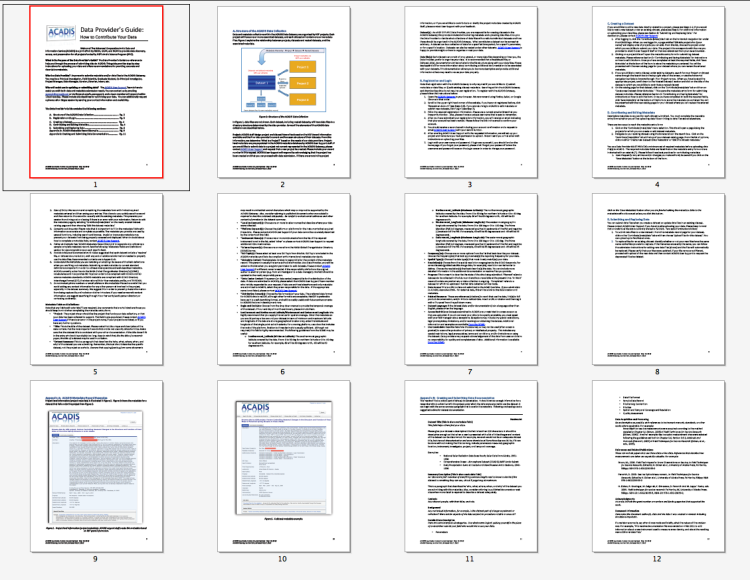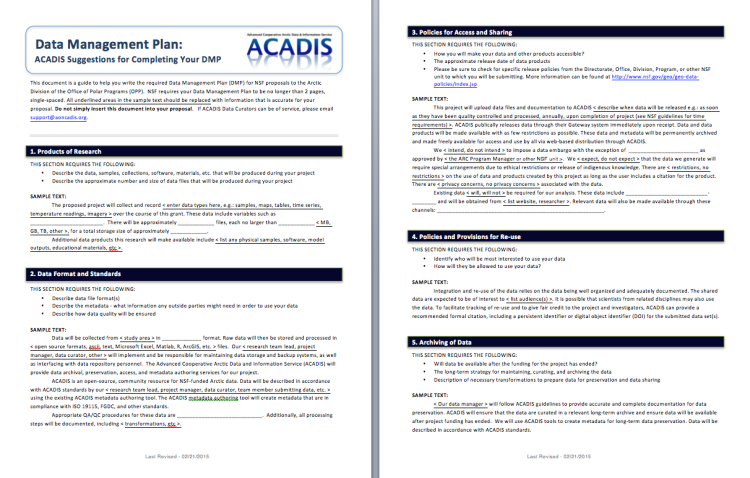Problem
Scientists are now required to submit a data management plan (DMP) with each grant proposal. But given the changing requirements for data storage and sharing, many felt lost in a sea of information.
While there were existing DMP templates, the overwhelming experience of planning a project and writing a proposal meant that proposals were submitted with DMP instructions instead of a well communicated plan.

Constraints
I was required to focus only on National Science Foundation (NSF) data management requirements and how the Advanced Cooperative Arctic Data and Information Service (ACADIS) could help.
Team
I was a Data Curator at the National Snow and Ice Data Center (NSIDC) working with the curator that wrote the original instructions, Liz Schlagel, and the program manager, Lynn Yarmey. I was responsible for choosing the new direction of the template. Lynn guided and approved each step of the effort.
Process, Research Design
- Find out what mistakes users had made in the past by conducting interviews with stakeholders and examining scientific proposals
- Determine which aspects of the current template were contributing to the mistakes.
- Draft a redesign using heuristics, empathy, and mental modeling.
- Test the redesign through moderated semi-structured interviews with NSF funded scientists.
Key Findings
The current document was 12 pages and did not match the context the user needed when the document was discovered. This exacerbated a feeling of panic that already existed because of changing funding pressures and internal university/organization requirements in order to get a proposal out the door. Scientists are submitting more and more proposals for less money. Often, they must write these proposals in their free/non-paid time.
- The document was too long (12 pages!)
- The context and purpose was not clearly communicated. It had multiple purposes – education about data management, a DMP template, and a guide about the ACADIS repository.
- Proposal writers found the document too late in the writing process to use it as an education tool. They were stressed out from an approaching deadline and needed a template to plug in fast.
- The instructions seemed like recommended text.
- Proposal writers did not understand the data management options they had and the document seemed like an all-encompassing plan when it was actually describing how to use one particular data repository.
Results
The document was pared down from 11 pages to 2 pages. The 2 page format reflected the required length of a DMP for a proposal to NSF. It had concise instructions and section headers that gave clear context. Each section provide 2-3 questions that needed to be addressed as well as sample text for anyone wishing to use the ACADIS platform. The sample text was quoted and gave MadLib-like instructions for filling in details about their own project.
User interview tests passed with flying colors; however, there were several comments about changing the format from a word document to either a PDF or a webpage form that would return a completed plan as a txt document. After further examination, proposal writers agreed that the word document better fit their workflow and was preferred over other options.
The template was so successful that several universities and national labs requested to copy the format using their own funding specifications. These were huge compliments!

